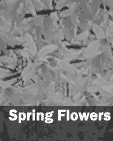

|
Rube's Notes: |
The New York Botanical Garden's daff collection fully lives up to what is promised on their website -- "one of the largest collections of daffodils in the United States, numbering more than 100,000 bulbs." The "Baby Moon" daffs are in the Enid A. Haupt Conservatory; a similarly small species, shown in Fig. 5, is out in the Rock Garden. Figs. 1 to 3 are pink-tinged Daffs, a color growers have worked very hard to bring out in this species; Fig. 2 is of the "split corona" variety beloved by the Rube. This flowers are found in NYBG's two main collections of daffs, "the Murray Liasson Narcissus Collection where 160 cultivars are displayed according to horticultural classification, Daylily-Daffodil Walk with 220 different cultivars." The Rube particularly liked the latter collection where the daffs are right along the footpath so you can examine them very closely. Fig. 6 is another favorite of the Rube's, "Spellbinder", which has a trumpet that gets whiter the longer it is open. Fig. 7 is Daffodil Hill, out in what the Rube would consider the "boonies" of the park, as he orients everything from the train station. For another visitor from the neighborhood, or who drives in, this might be their front door to the park. ****** Fig. 4 shows a beginner's "point-and-shoot" photographic lesson learned by the Rube over the course of two days. (The Rube being a person for whom it took 5,000 photos to budge off the "Fully Automatic" setting on his camera to the "Semi-Automatic", and then a year and 20,000 more photos to learn that the little button marked with a flower was actually quite useful for shooting flowers and any other kind of extreme close-up.) After his first day at NYBG, he was extremely disappointed with his pictures as they were consistently "burned out" and only partially in focus. Had something gone wrong with the camera? Then he remembered that he had drifted back towards using the standard exposure on his camera, rather than underexposing by 2/3rds of a stop or more, which he learned had helped to guard against overexposure. (Dark parts are easily lightened up in PhotoShop, but blasted out highlights are gone forever.) And also he had stopped checking the after-shot exposures on his LED to conserve battery power, as after a year, the batteries don't hold their charge like they used to. He figured he knew what kinds of shots presented an exposure problem by now. As shown in Fig 4, daff flowers can be very bright compared to their dark green foliage. The camera tries to bring everything up to a medium level unless you put the brakes on, which in the case of the first day of shooting for the Rube often sent the flowers out through the roof. There was also another setting on the Rube's camera, "AV" (meaning "Aperture Priority"), which he had never bothered with. But he had heard and read lots of times (like this was something he should pay attention to) that the smaller the aperture, the greater the depth of field. He even remembered his Dad telling him, apropos of the family Brownie that you held at your waist to take the picture, that there was a group of photographers who call themselves the 5.6, or maybe even the 8.0 or higher club, because they wouldn't take a picture at larger apertures (which are for some reason defined by smaller numbers) than this. And seeing that in many of his pix from day one at the NYBG, some random part was in focus and the rest was off, he thought why take the decision-making stress off the camera, as long as there is plenty of light, just make it use a very small aperture and then everything will have be in focus. And sure enough, that worked like a charm on day two. Almost too many pictures came out well! So now he is sticking with the AV position. It's only one click away from M (Manual)! |
All content Copyright 2003 on behalf of its creators; please obtain permission for anything besides private, noncommercial use.